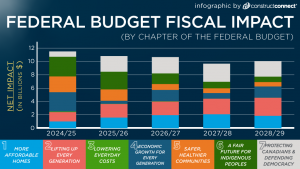Building Information Modeling (BIM) has taken hold in every aspect of construction project development. BIM is not new to the industry — it’s been around for a while. It’s global acceptance is confirmed by the fact that countries such as Brazil, Chile, Denmark, Finland, Norway, United Kingdom, South Korea, Singapore and Vietnam have gone so far as to mandate the use of BIM in their public projects.
The attractions of BIM are well-known to those who have adopted the technology. At initial design stage, for example, BIM tools facilitate data continuity and accuracy, thus helping designers optimize designs and unlock new levels of creativity and innovation. During construction, the dramatic 3D renderings and virtual fly-through/fly-over visualizations created with BIM software improve collaboration between project engineers and trades.
However, Canada and the United States lag in terms of similar national mandates. At the same time, BIM’s acceptance in North America continues to grow, with or without government mandates, particularly given the trend towards more public-private partnerships (PPPs) and lump-sum turnkey contracts.
The reasons are compelling. A 2016 report studying the use and acceptance of BIM, titled Measuring the Impact of BIM on Complex Buildings, indicated an owner satisfaction level of more than 93 per cent.
In addition, more than 70 per cent said the use of BIM helped them better understand design solutions, generated better construction documents, and improved the ability to plan construction and logistics. Significantly, more than 85 per cent also said BIM increased overall labour productivity.
The lack of a national BIM mandate in Canada has raised concerns. Five years ago, the Canadian chapter of buildingSMART International (bSI) responded by issuing a call to action that laid out the foundation for possible governmental mandates in this country. They called it A Roadmap to Lifecycle BIM in the Canadian AECOO Community.
“A clear transformation is needed for the Canadian Architecture, Engineering, Construction (AEC) industry,” the group said, explaining that it “firmly believes that this transformation should be supported by more collaborative approaches to project delivery based on building information modeling (BIM) tools, technologies and processes that are aligned with other similar initiatives currently under way around the globe.”
Little has happened since, however, due to pockets of resistance across the AEC industry. Stateside, for example, the Trump administration’s current philosophy of deregulation is not conducive to the establishment of any national BIM standards.
There is also an issue of inertia. Some architects and contractors, who for years have been happy with 2D processes such as AutoCad, are reluctant to invest in the computers, software and qualified staff necessary to upgrade to BIM. Others believe that mandating BIM down to municipal levels could force some smaller, local industry players out of the public project bidding picture.
Meanwhile, BIM technology continues to develop, becoming less expensive and easier to incorporate into design and construction processes. A regular flow of new software releases are increasing BIM’s flexibility and potential utilization, offering, for example, on-site accessibility of data and renderings through mobile devices. Over time, the expansion of BIM and its associated platforms can only lead to increased adoption at all levels of project development.
Looking ahead, it’s hard to imagine how contractors and designers can win bids on large commercial and public projects without using BIM, government mandates or not. Many are already are demanding it.
John Bleasby is a Coldwater, Ont. based freelance writer. Send comments and Inside Innovation column ideas to editor@dailycommercialnews.com.











Recent Comments
comments for this post are closed